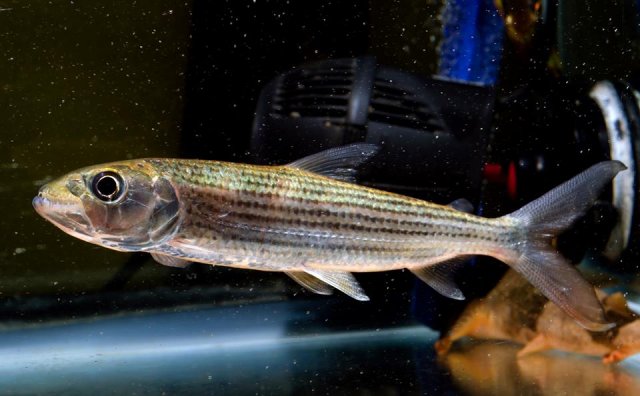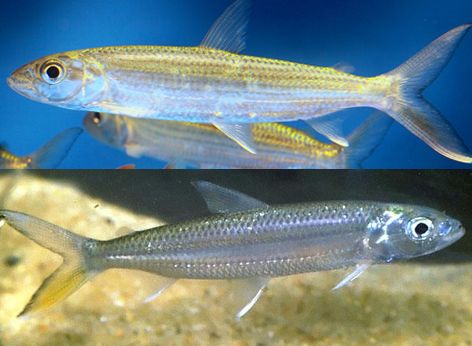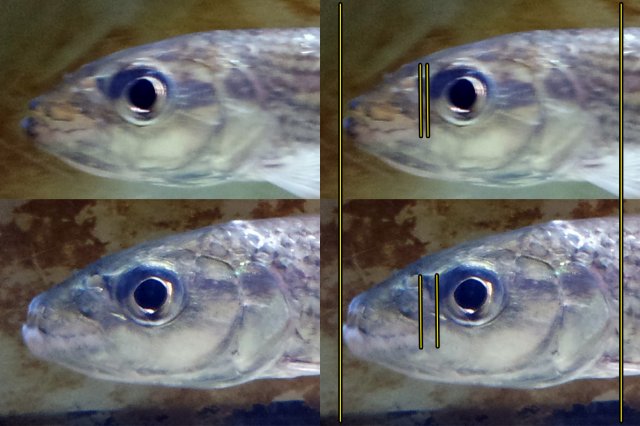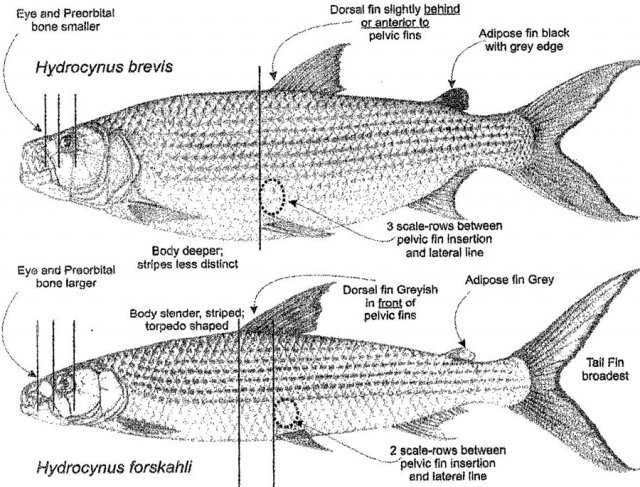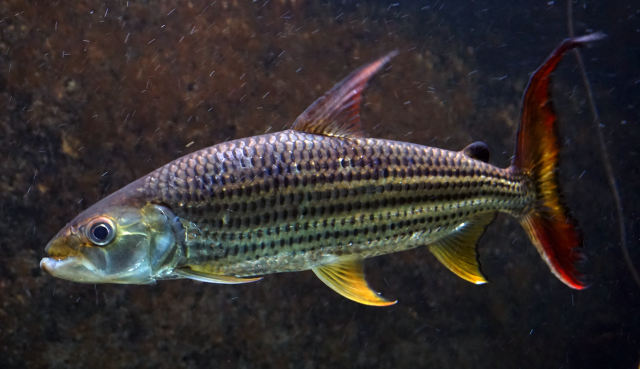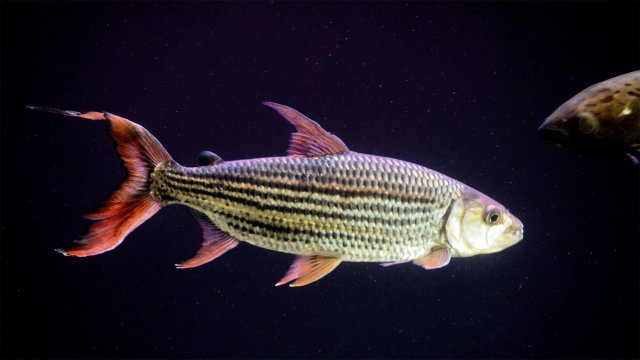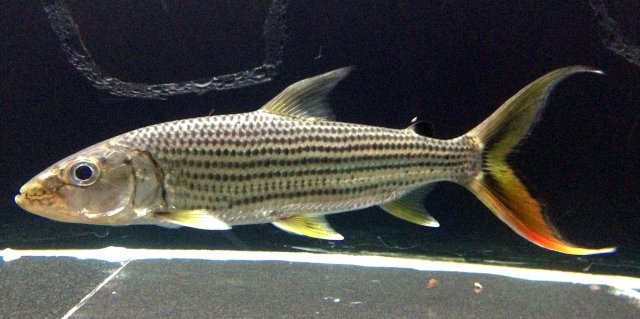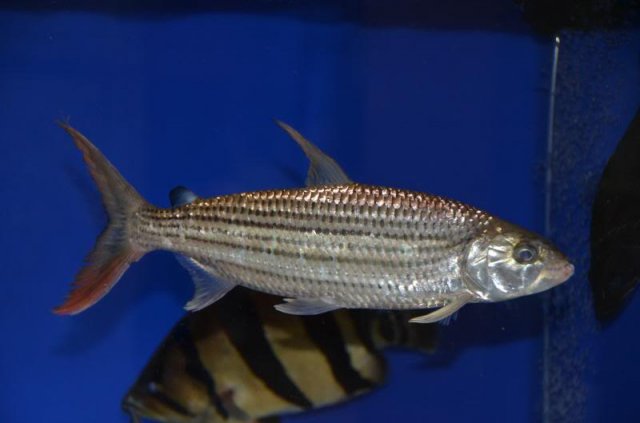A Guide to the Care and ID of African Tiger Fish (Hydrocynus) 3.0
2.0 update- complete rewrite for both readability and depth of information.
2.1 update- minor updates to Suggested Reading.
2.2 update- Sweeping format changes, updated data that's recently become available, reduced image count to help load times.
2.3 update- Minor format changes for readability after the migration and a new blurb about BATF.
3.0 update- Nearly complete rewrite updating the Guide after four years of inattention. Added cf. "stout vatf", cf. "big eye", updated the rest of the species profiles, updated husbandry, fixed links. Need to find and re-upload Photobucket pics.
Table of Contents, Introduction & Acknowledgements
Table of Contents
Introduction
Acknowledgements
2.0 update- complete rewrite for both readability and depth of information.
2.1 update- minor updates to Suggested Reading.
2.2 update- Sweeping format changes, updated data that's recently become available, reduced image count to help load times.
2.3 update- Minor format changes for readability after the migration and a new blurb about BATF.
3.0 update- Nearly complete rewrite updating the Guide after four years of inattention. Added cf. "stout vatf", cf. "big eye", updated the rest of the species profiles, updated husbandry, fixed links. Need to find and re-upload Photobucket pics.
Table of Contents, Introduction & Acknowledgements
Table of Contents
NOTE: Click on the hyperlinks to go to that content.
Introduction
Greetings again!
In the four years since this guide was published, many things have changed. I have finished my education and gained lots of real world experience working as a fisheries biologist. Even more importantly however, we as a community have gained four years of real world experience with these animals, which has gone a long way in helping to elucidate the reality of these animals: both their husbandry and their taxonomy.
In the four years since this guide was published, many things have changed. I have finished my education and gained lots of real world experience working as a fisheries biologist. Even more importantly however, we as a community have gained four years of real world experience with these animals, which has gone a long way in helping to elucidate the reality of these animals: both their husbandry and their taxonomy.
Acknowledgements
I would like to first thank everyone who has done work on these fish before me. Your hard work and dedication has been essential for me to be able to compile this information. I don't pretend to be the progenitor of this information; I am merely compiling the data that is a result of years of research and work into one place.
I would like to thank everyone who has put up pictures that have found their way into the public domain. I spent hours scouring Google to find pictures to help to illustrate the points I wished to make. I made sure not to use pics that were copyrighted or that I was specifically instructed not to use. Shame, that; I am not authorized to use the finest picture of a brevis that exists. If you see your picture on here, let me know and I'll mention you in this acknowledgement section as a contributor. I know probably more of these pictures than not belong to members here. I'm not trying to steal your intellectual property, I am merely trying to contribute to the community. As such, all rights to all pictures belong to their owners and are used under the fair rights principle. If you don't want me using them, I will remove them. Thank you.
I would also like to specifically thank these MFK members-
Tigerfangs, whose wonderful pictures of his fish from some of the first batches to be imported were a significant inspiration for me to learn about these fish, and whose sage advice regarding the care of these fish still proves to be true to this day.
DayumDanny, who jumped into helping me prepare this thread with both feet. He was wonderfully helpful with compiling pictures for the galleries.
And finally a man who has played an immense role in bringing ATF into the hobby, Mr. Rare Fish himself, fugupuff
. Without Wes' help, this thread would not exist. Wes' help is also critical to helping me continue to learn and grow about this genus.
fugupuff
. Without Wes' help, this thread would not exist. Wes' help is also critical to helping me continue to learn and grow about this genus.
Suggested ReadingI would like to thank everyone who has put up pictures that have found their way into the public domain. I spent hours scouring Google to find pictures to help to illustrate the points I wished to make. I made sure not to use pics that were copyrighted or that I was specifically instructed not to use. Shame, that; I am not authorized to use the finest picture of a brevis that exists. If you see your picture on here, let me know and I'll mention you in this acknowledgement section as a contributor. I know probably more of these pictures than not belong to members here. I'm not trying to steal your intellectual property, I am merely trying to contribute to the community. As such, all rights to all pictures belong to their owners and are used under the fair rights principle. If you don't want me using them, I will remove them. Thank you.
I would also like to specifically thank these MFK members-
Tigerfangs, whose wonderful pictures of his fish from some of the first batches to be imported were a significant inspiration for me to learn about these fish, and whose sage advice regarding the care of these fish still proves to be true to this day.
DayumDanny, who jumped into helping me prepare this thread with both feet. He was wonderfully helpful with compiling pictures for the galleries.
And finally a man who has played an immense role in bringing ATF into the hobby, Mr. Rare Fish himself,
In this section you will find influential and important posts and/or discussions that happened on MFK on the subject of African tiger fish.
A Definitive Key to Identify African Tiger Fish (Hydrocynus) (Version 1.1 of this guide)
On the problem of identifying African Tiger fish and the mythical Black Goliath.
Hydrocynus sp. Tiger fish clarification
Show us you Goliath Tiger Fish
SHOW YOUR ATF
TATF, VATF, Lake Tanganyika, exporters and why you don't know what ATF you have
Big Eye ATF ID definitive proof... TATF!
Another ATF riddle solved. Brevis & Forskahlii; same tank, same time. How to ID.
An interesting article on ATF
Bloat in Goliath Tigerfish
On the problem of identifying African Tiger fish and the mythical Black Goliath.
Hydrocynus sp. Tiger fish clarification
Show us you Goliath Tiger Fish
SHOW YOUR ATF
TATF, VATF, Lake Tanganyika, exporters and why you don't know what ATF you have
Big Eye ATF ID definitive proof... TATF!
Another ATF riddle solved. Brevis & Forskahlii; same tank, same time. How to ID.
An interesting article on ATF
Bloat in Goliath Tigerfish
Last edited:






